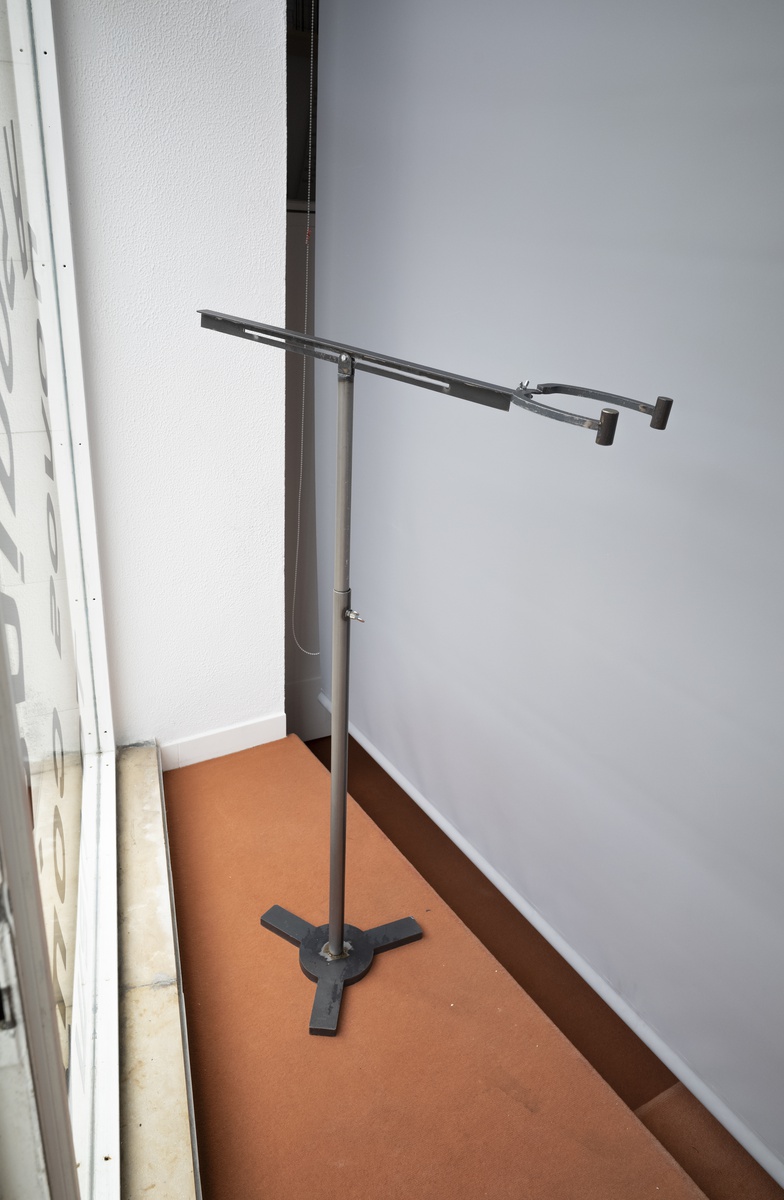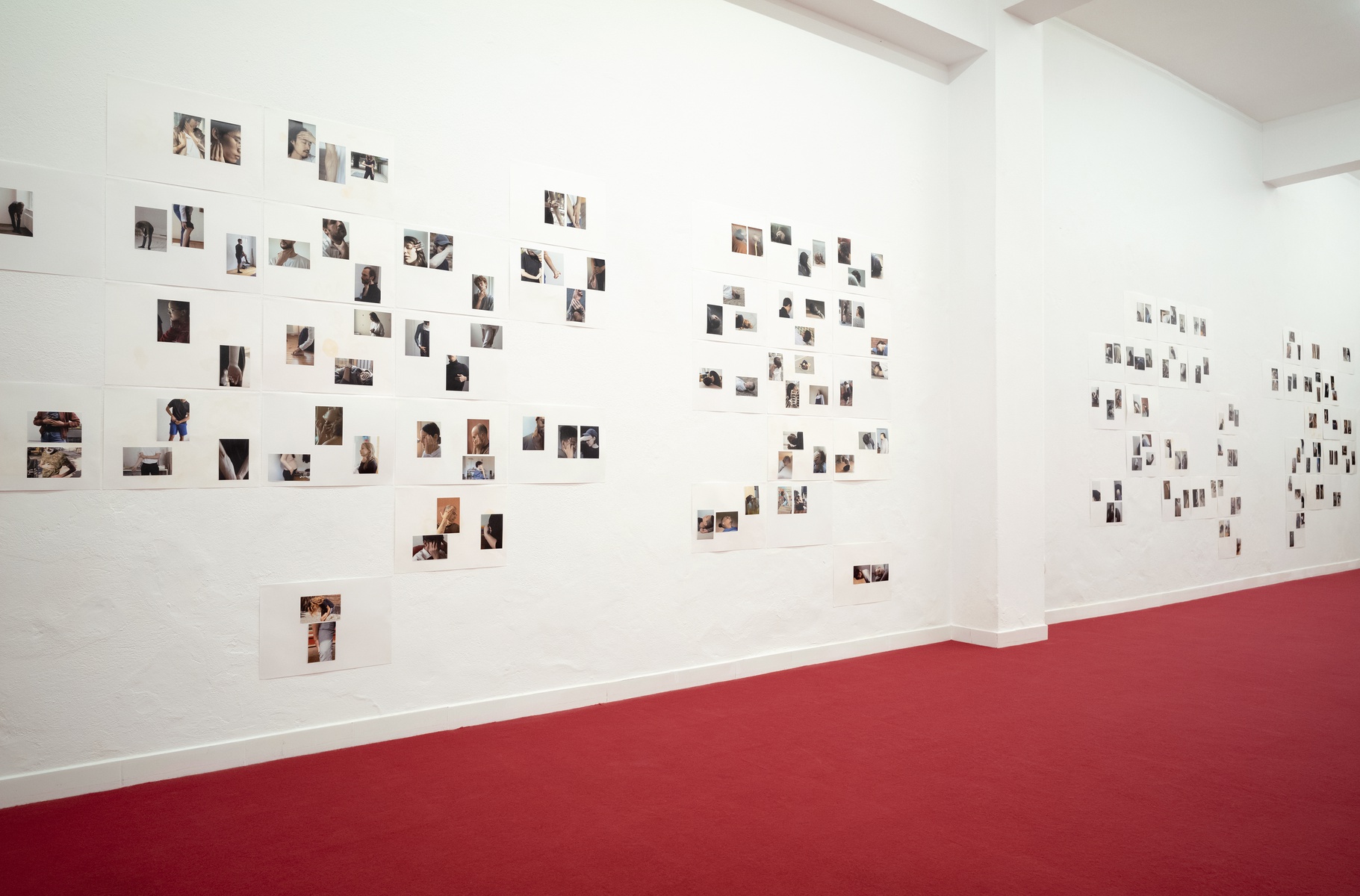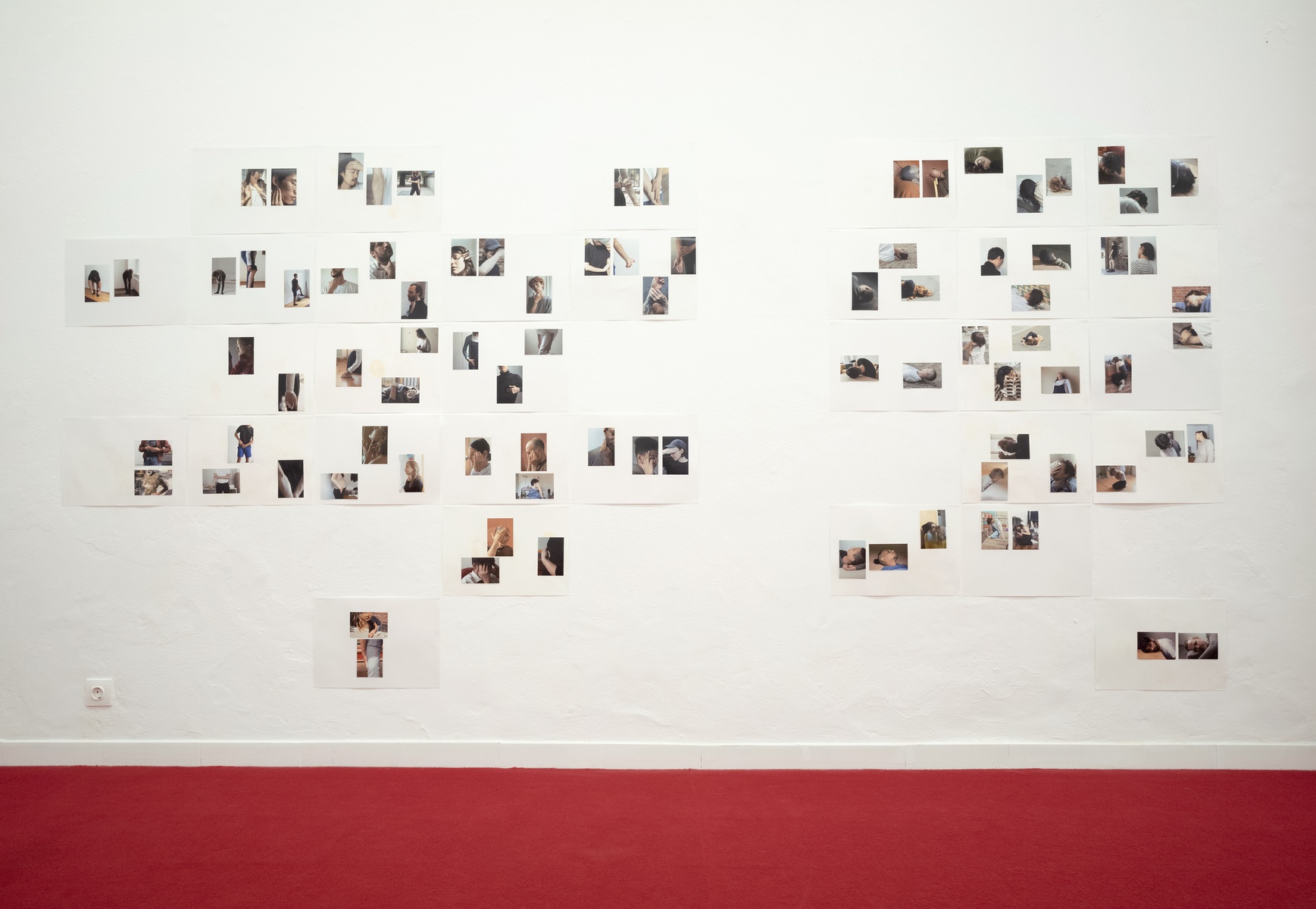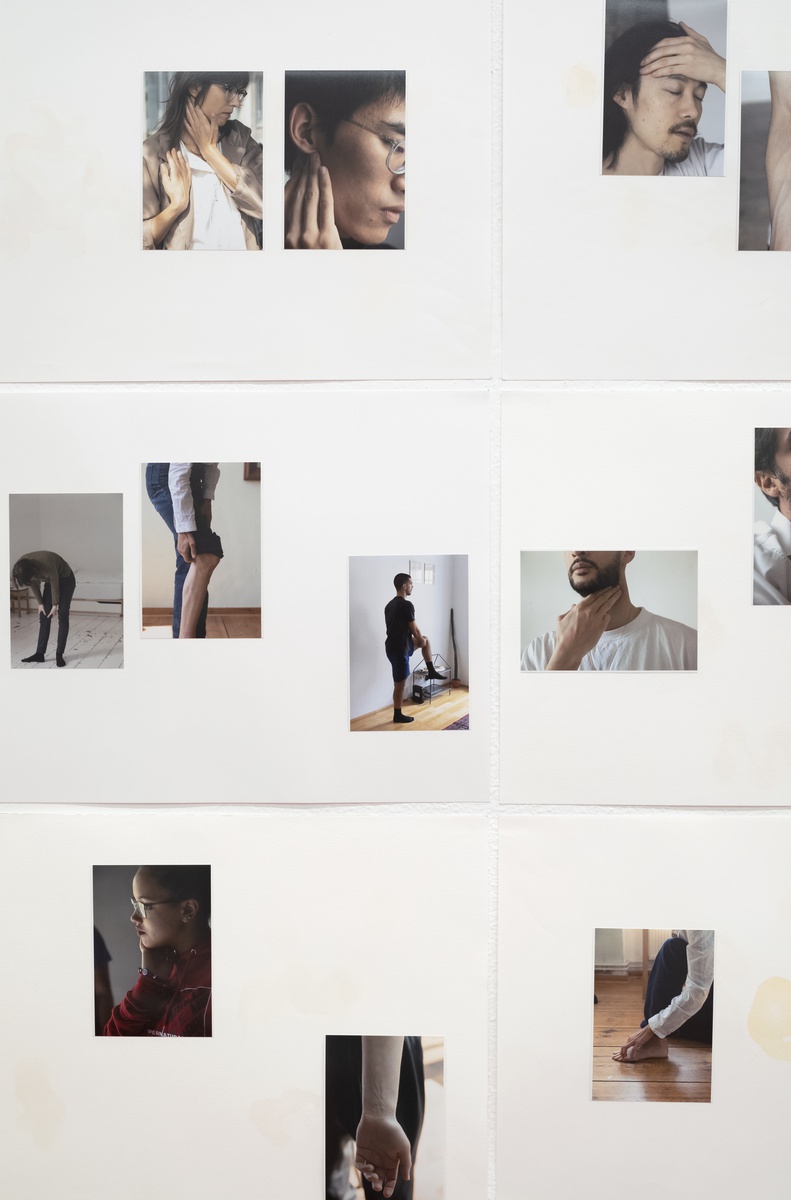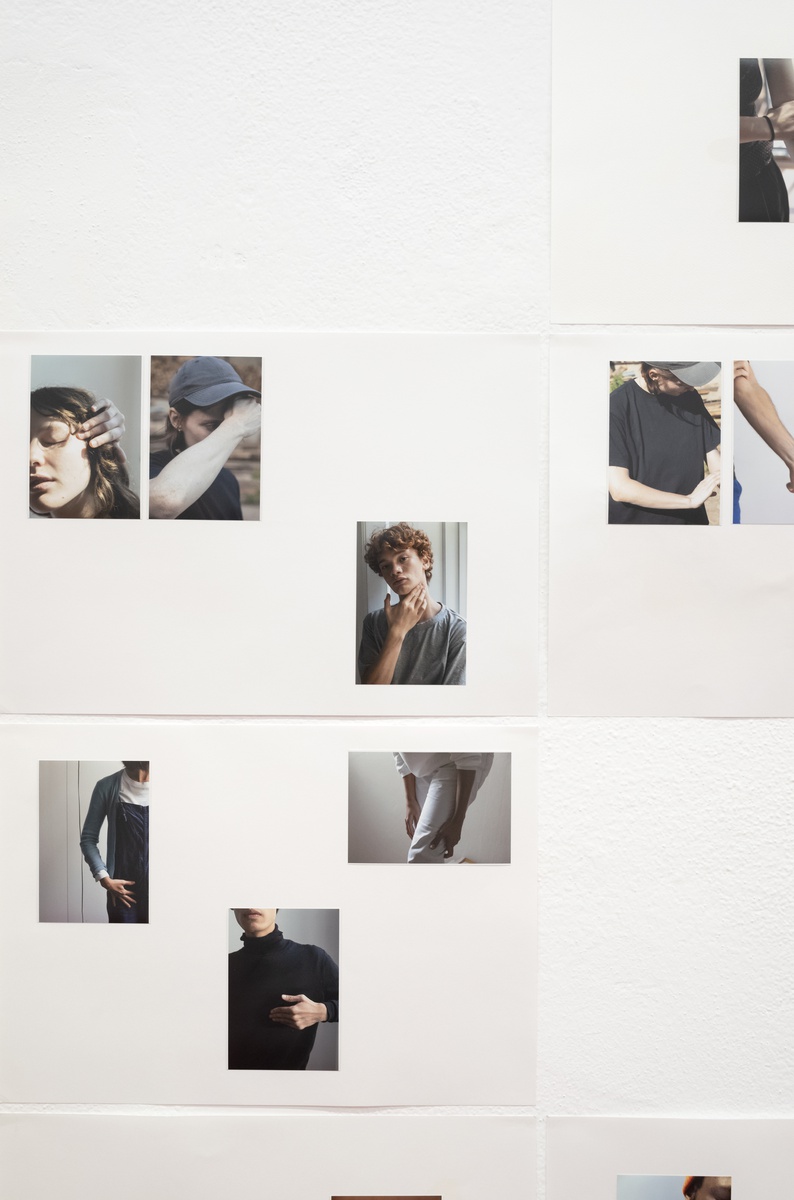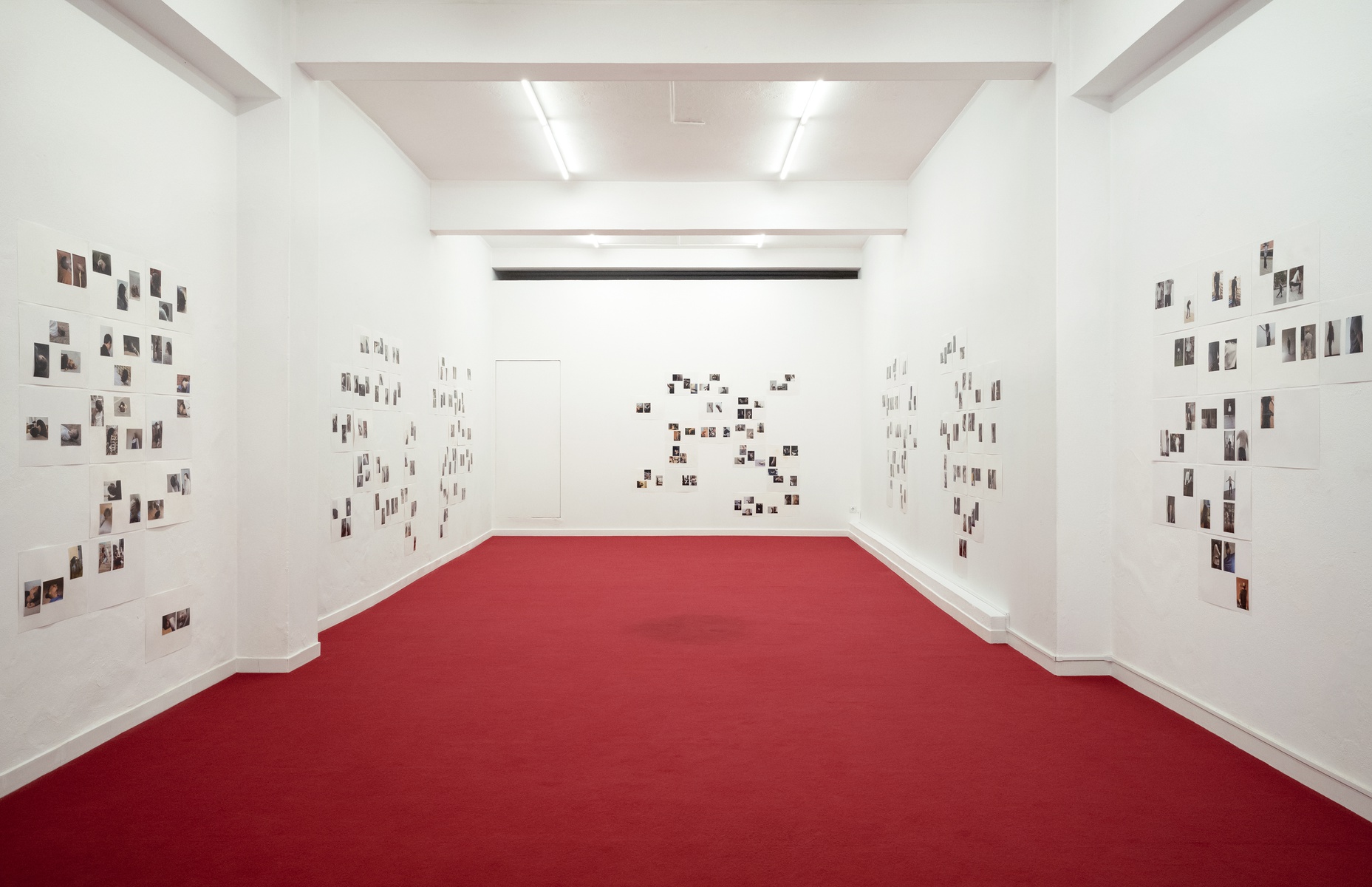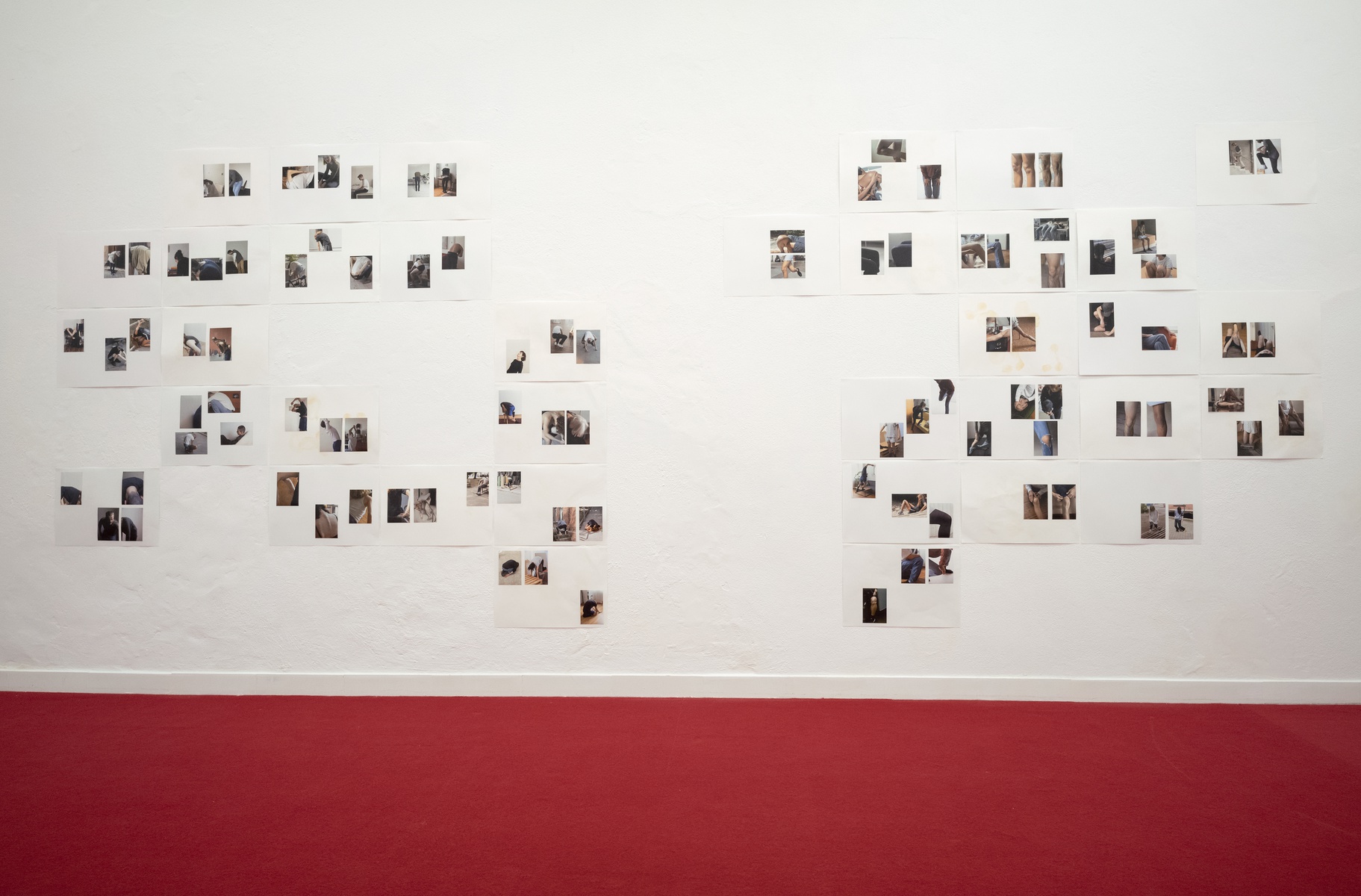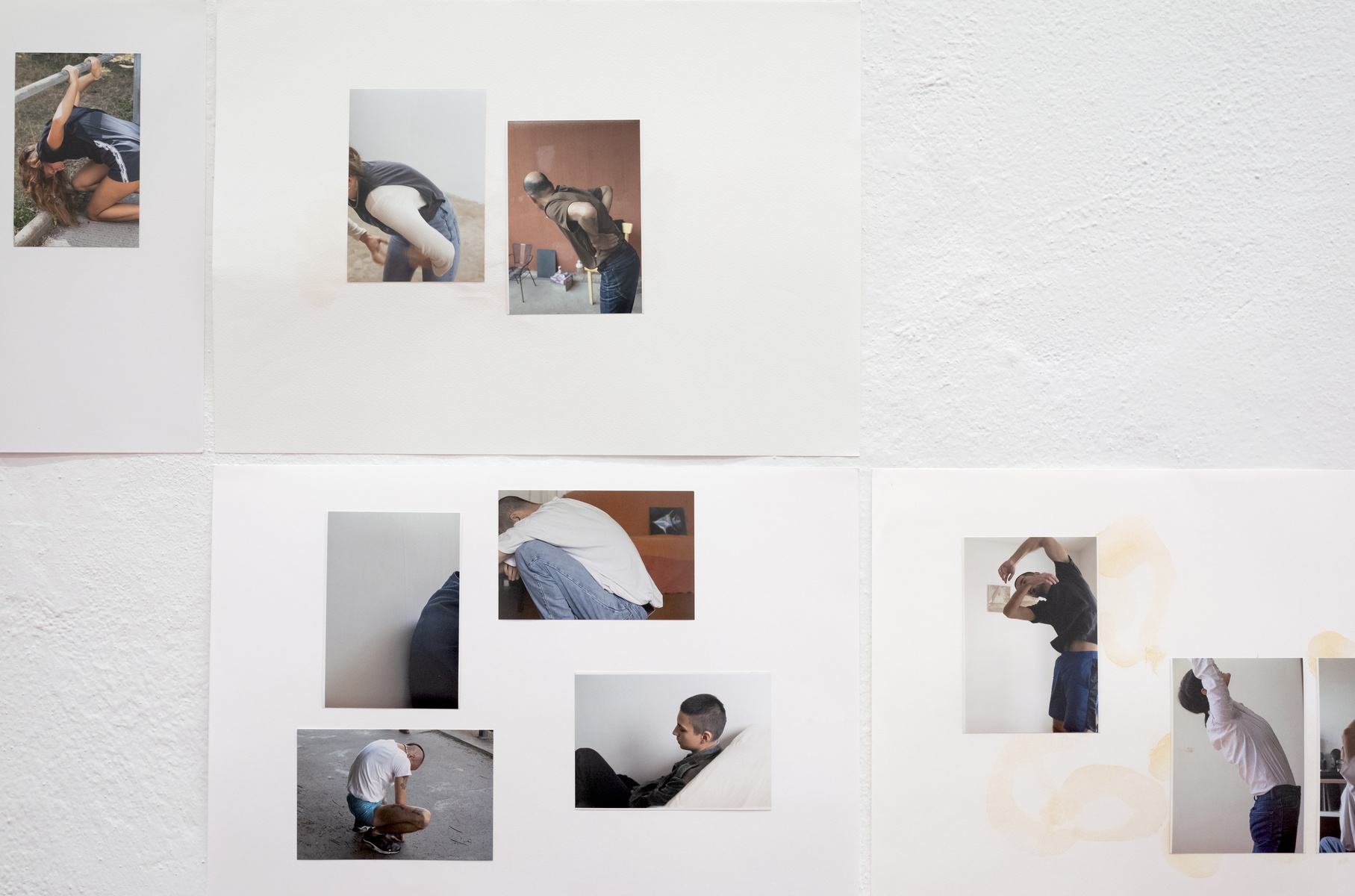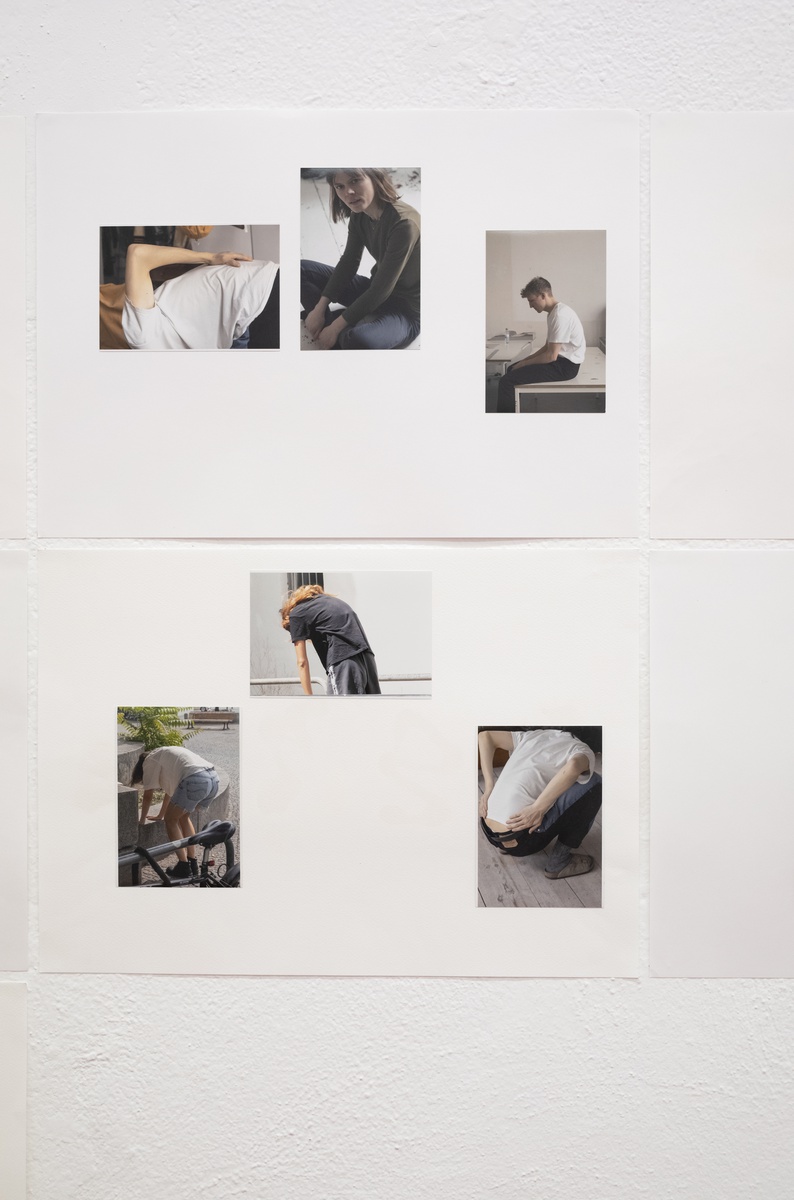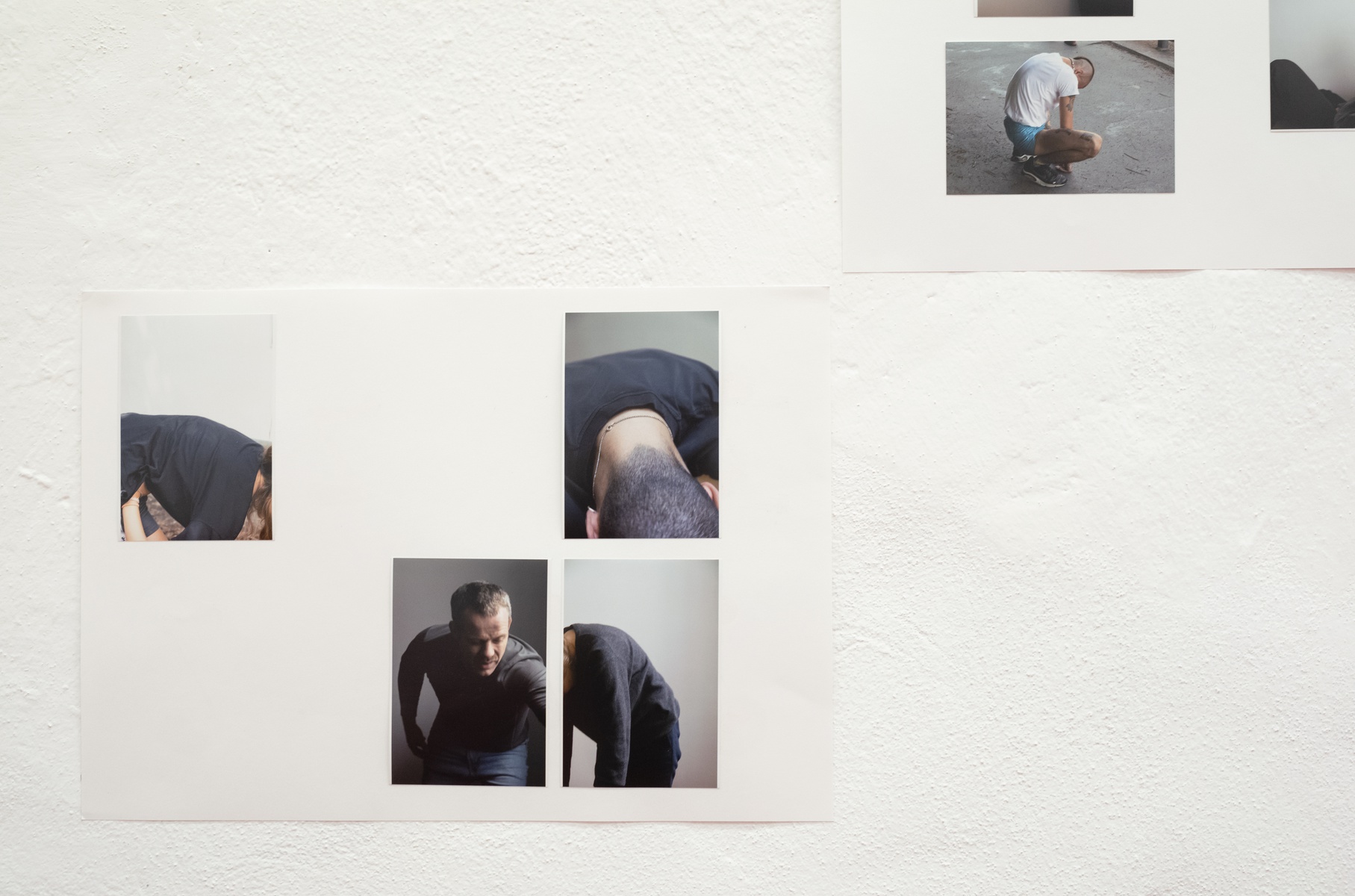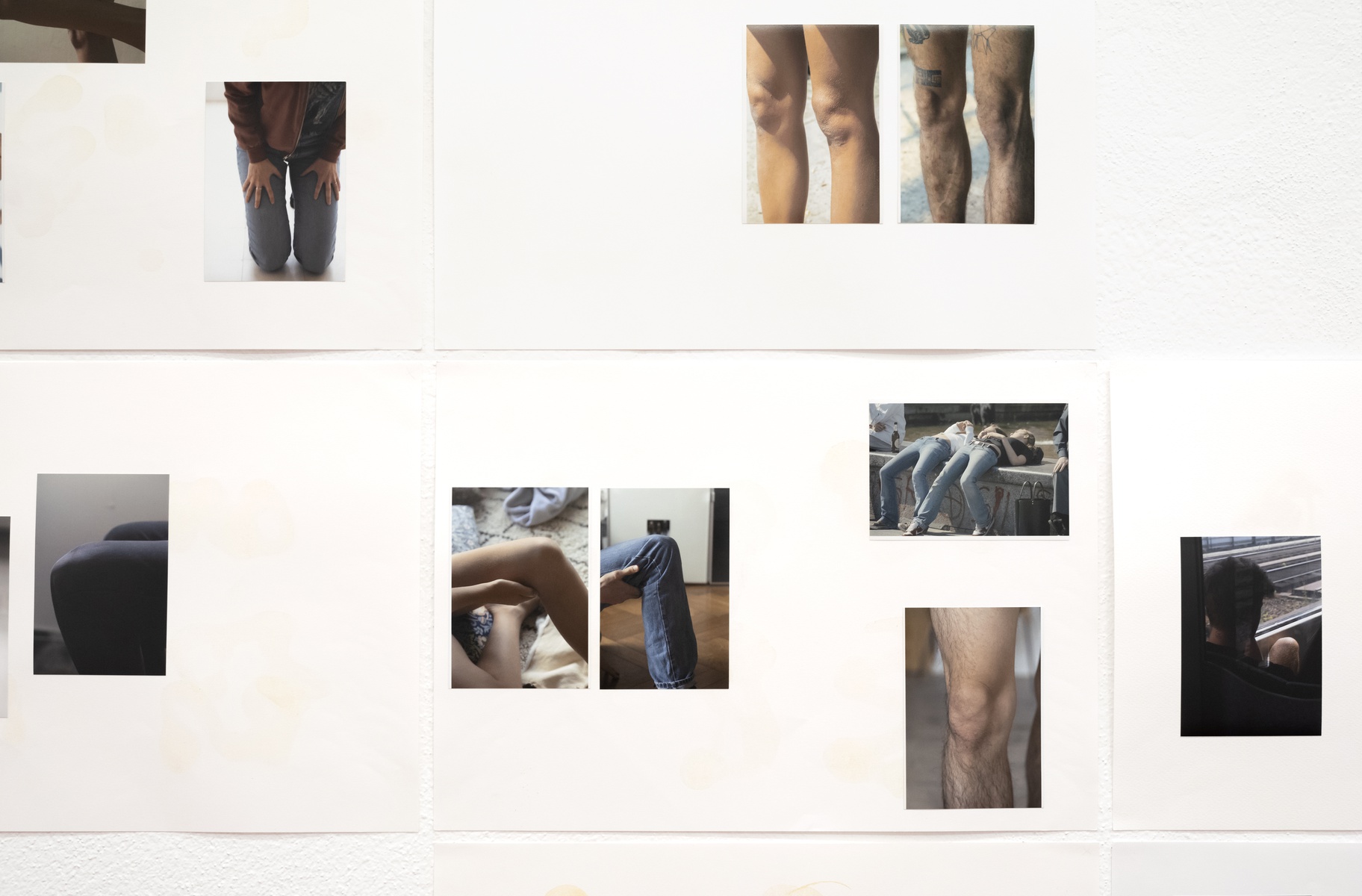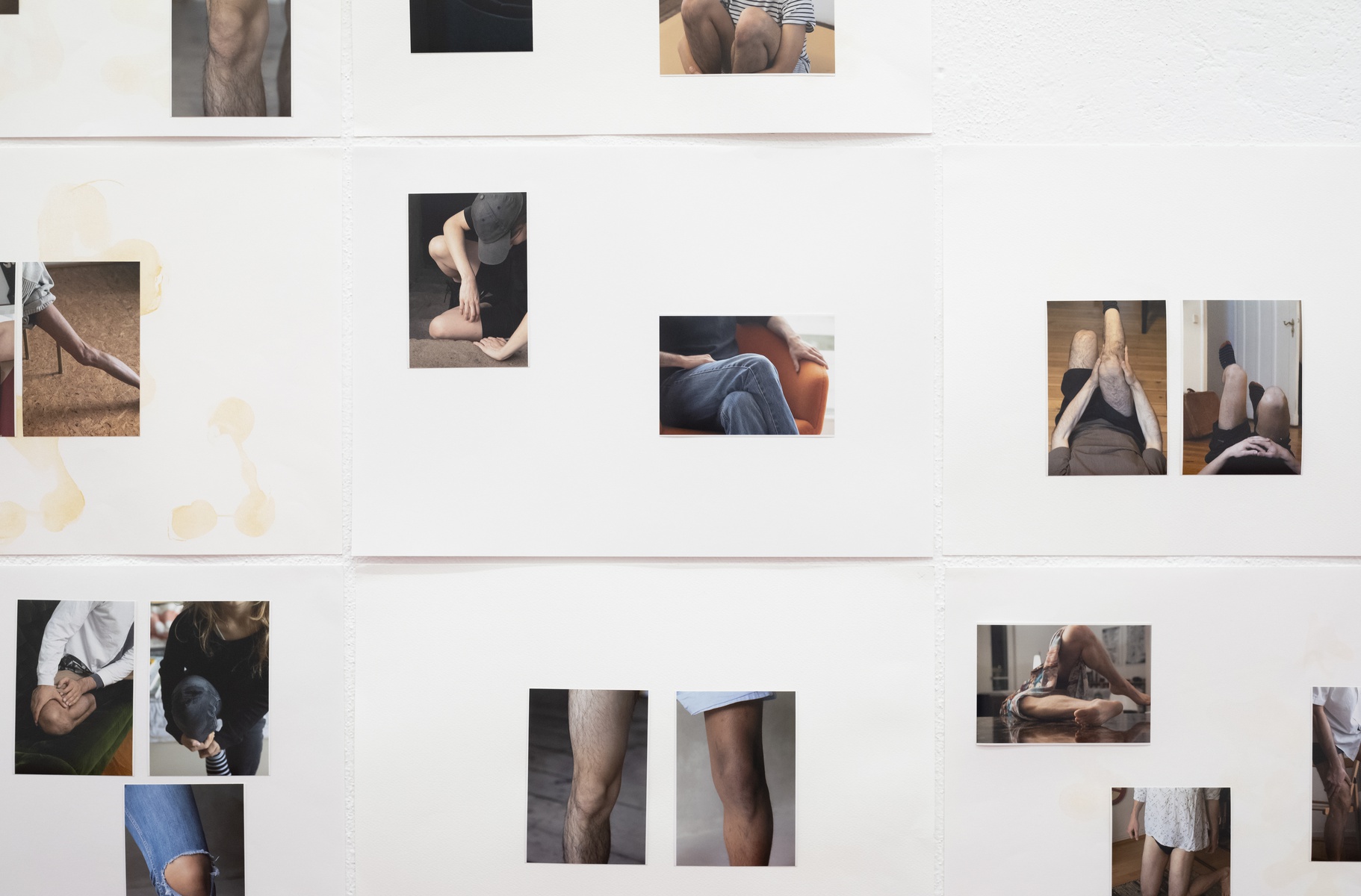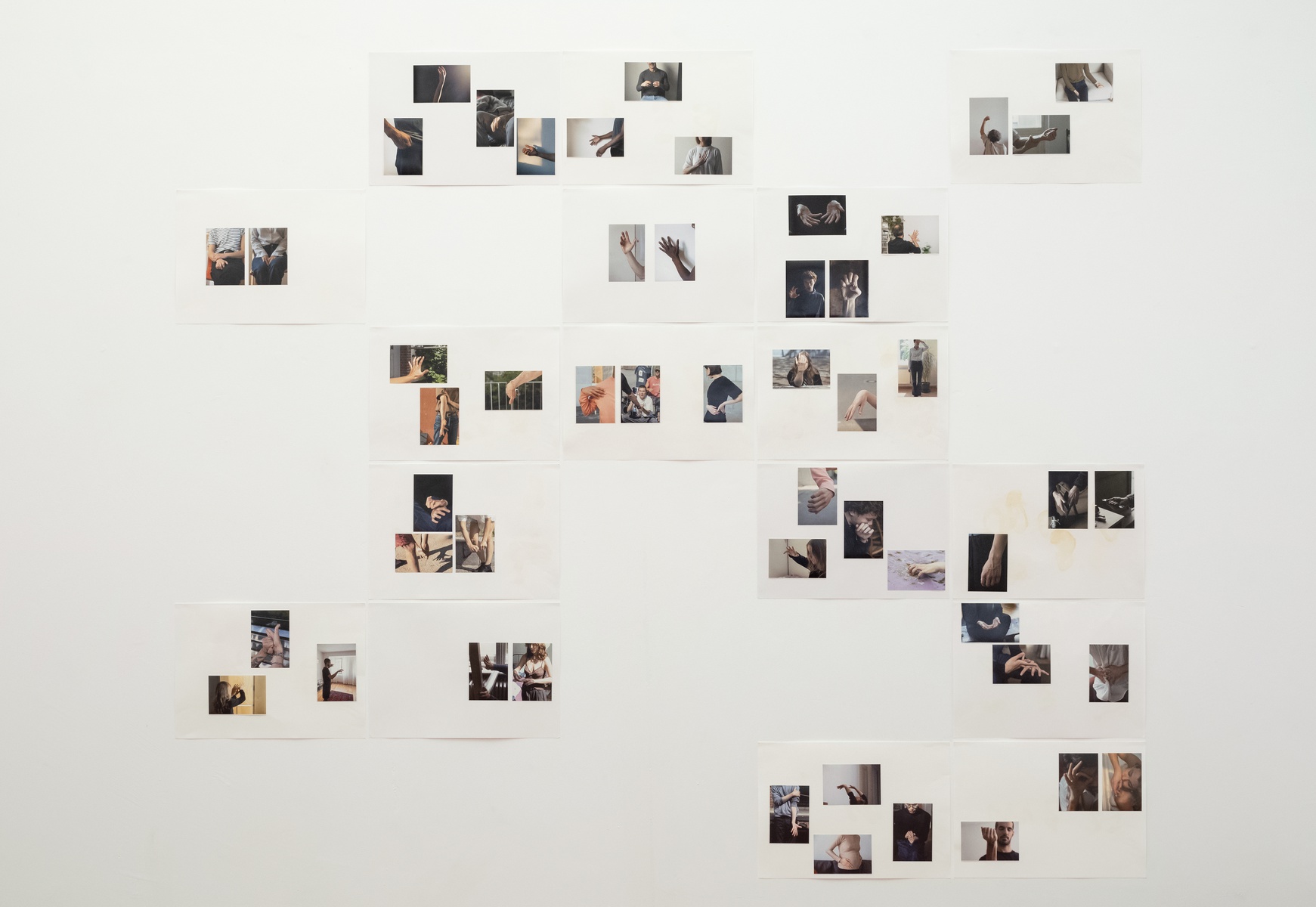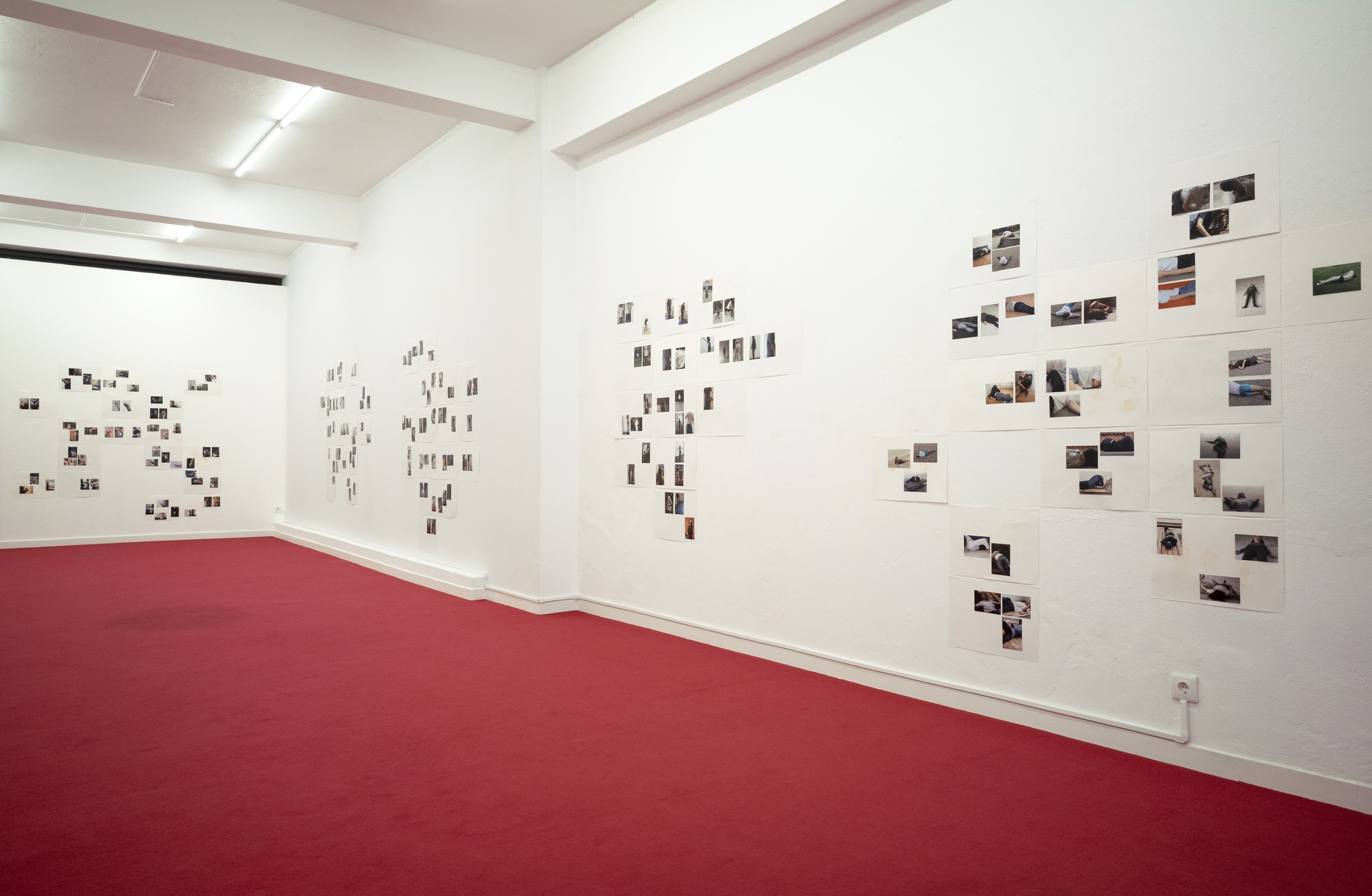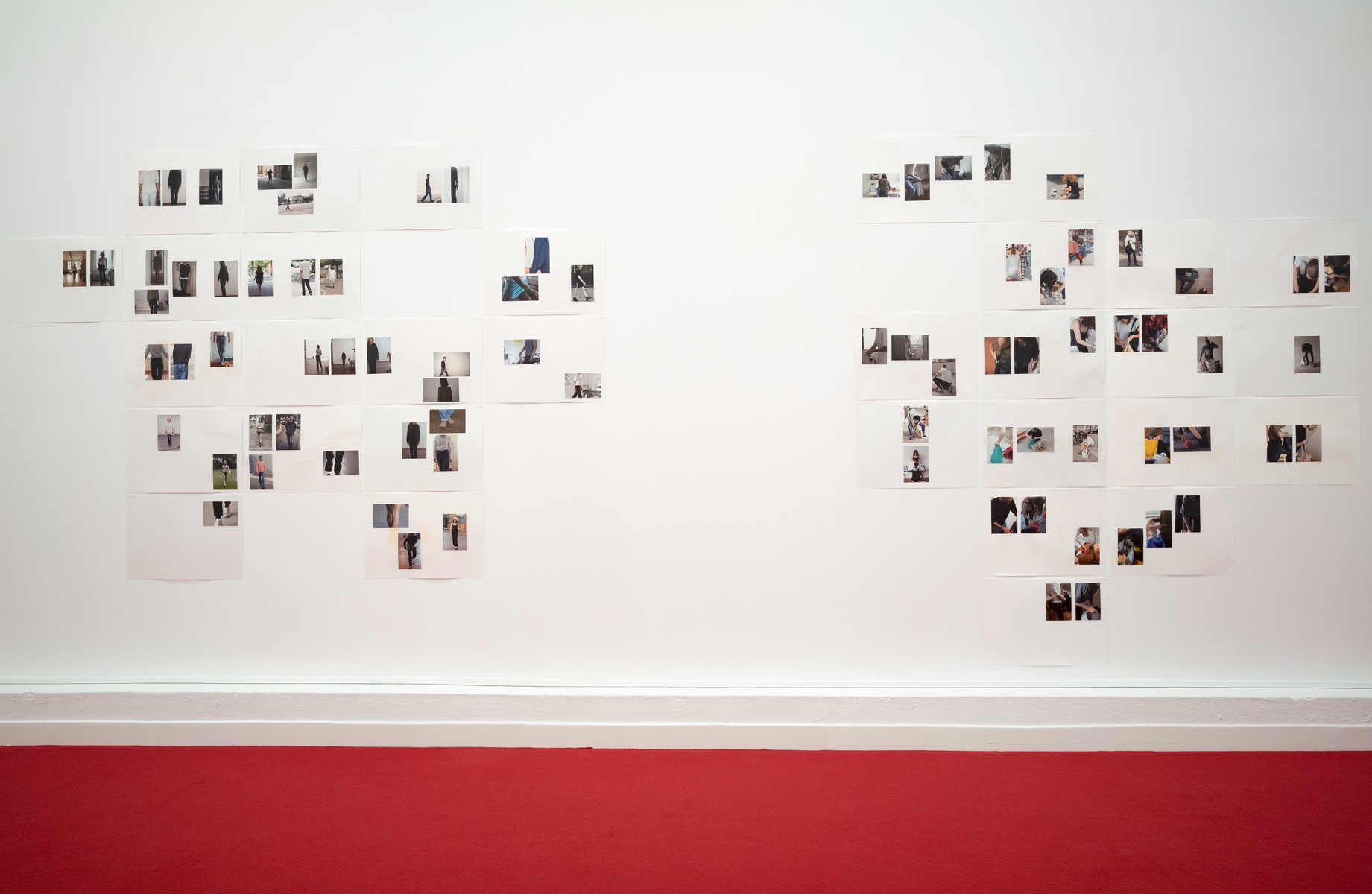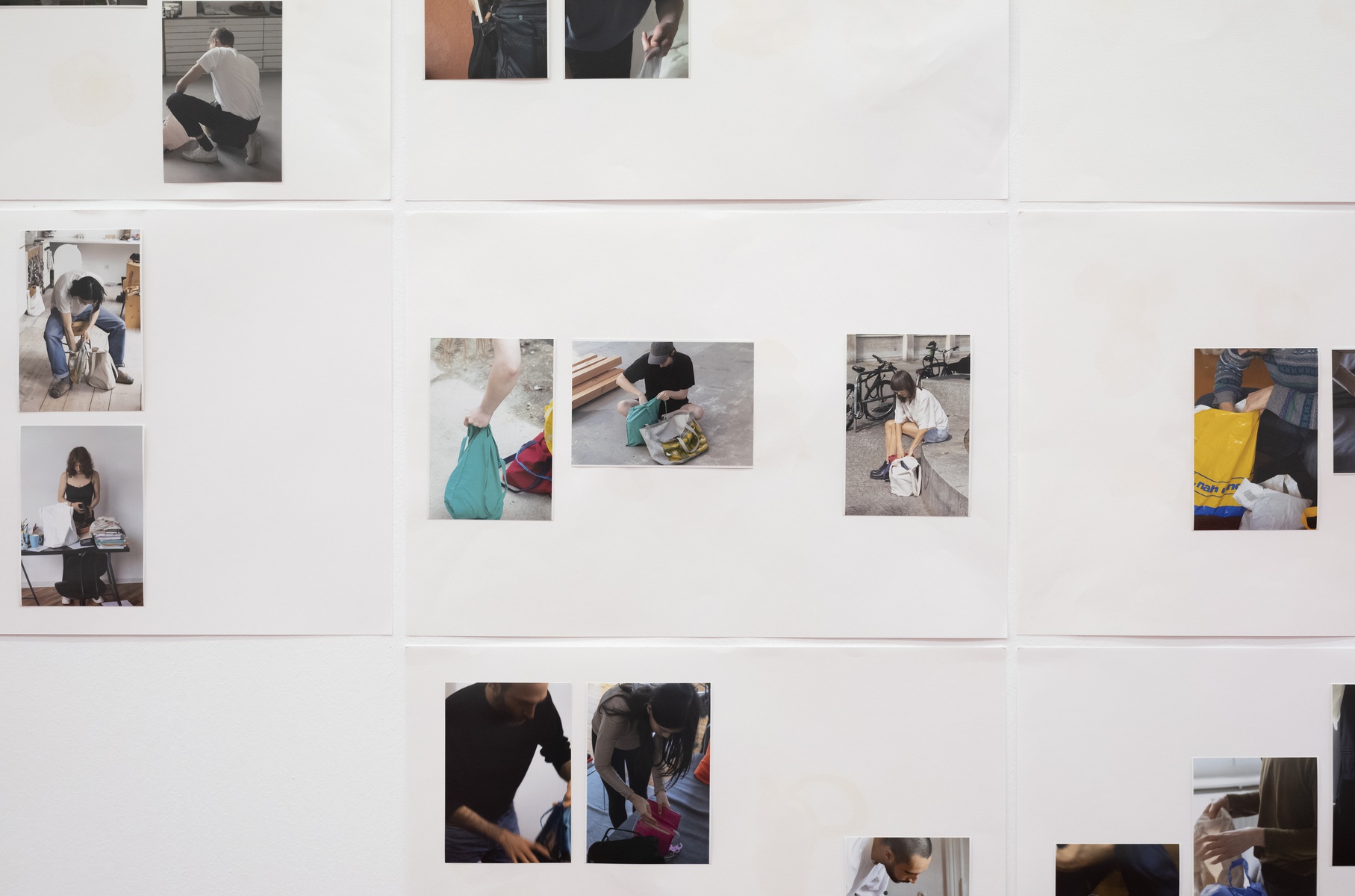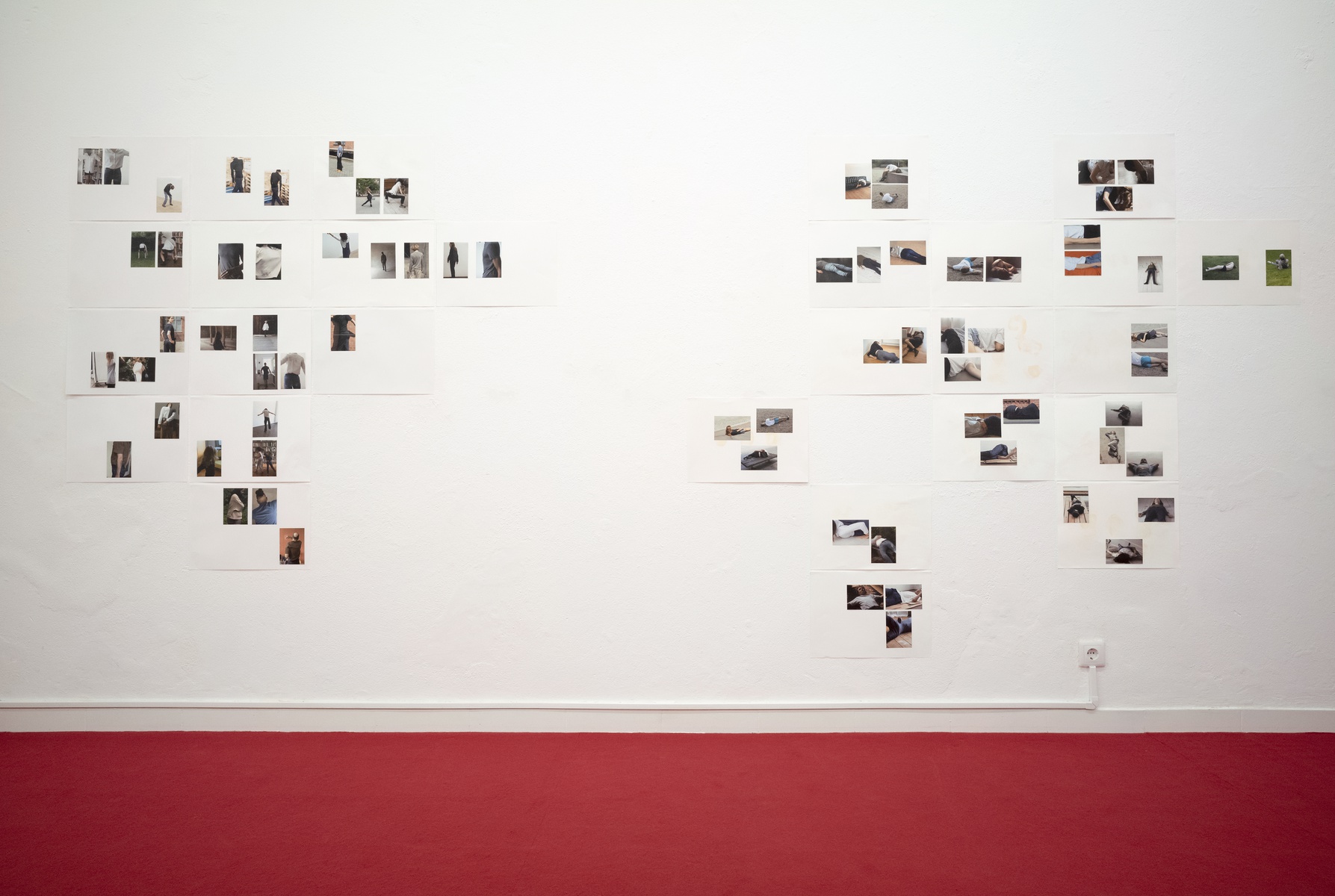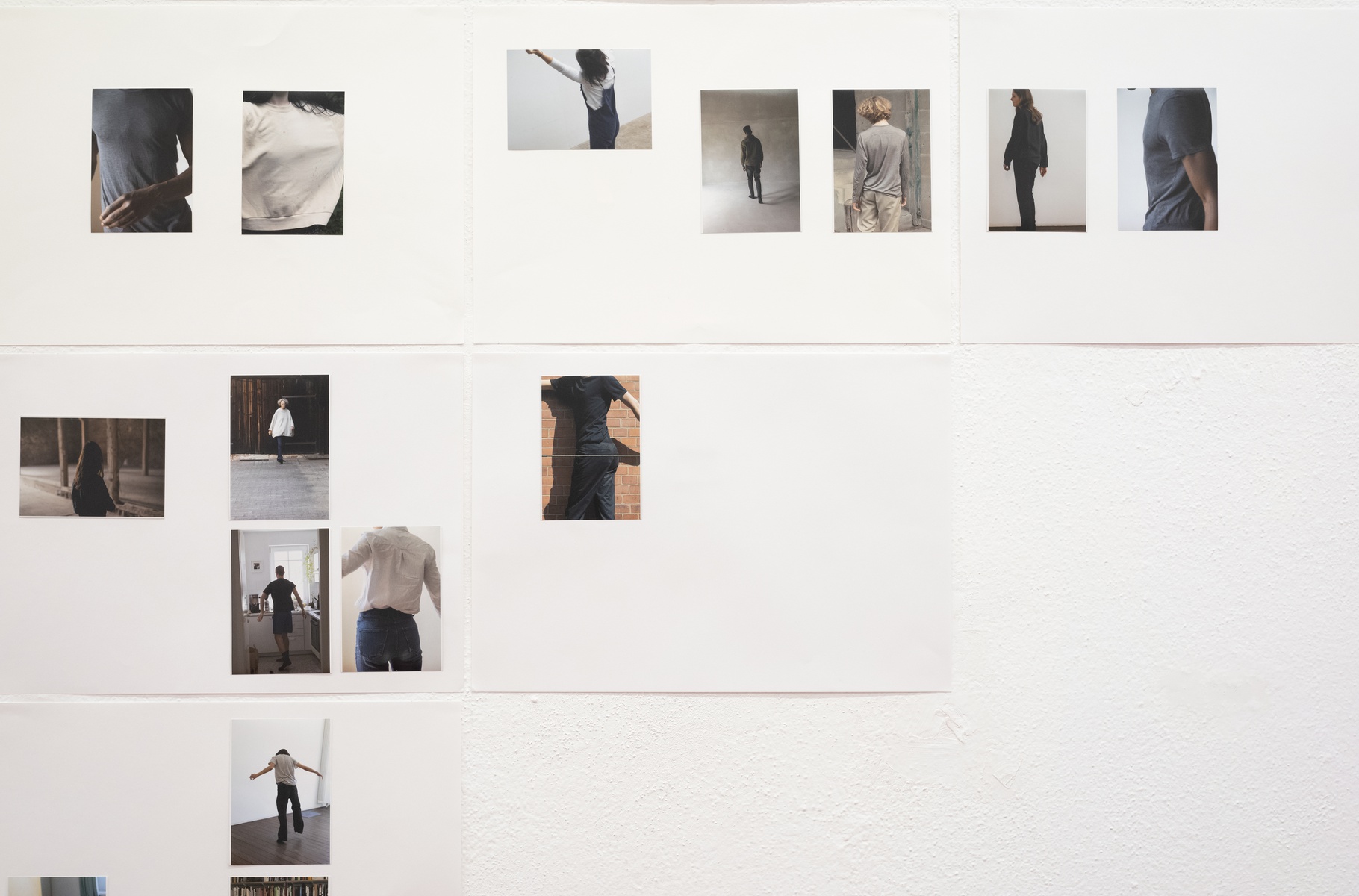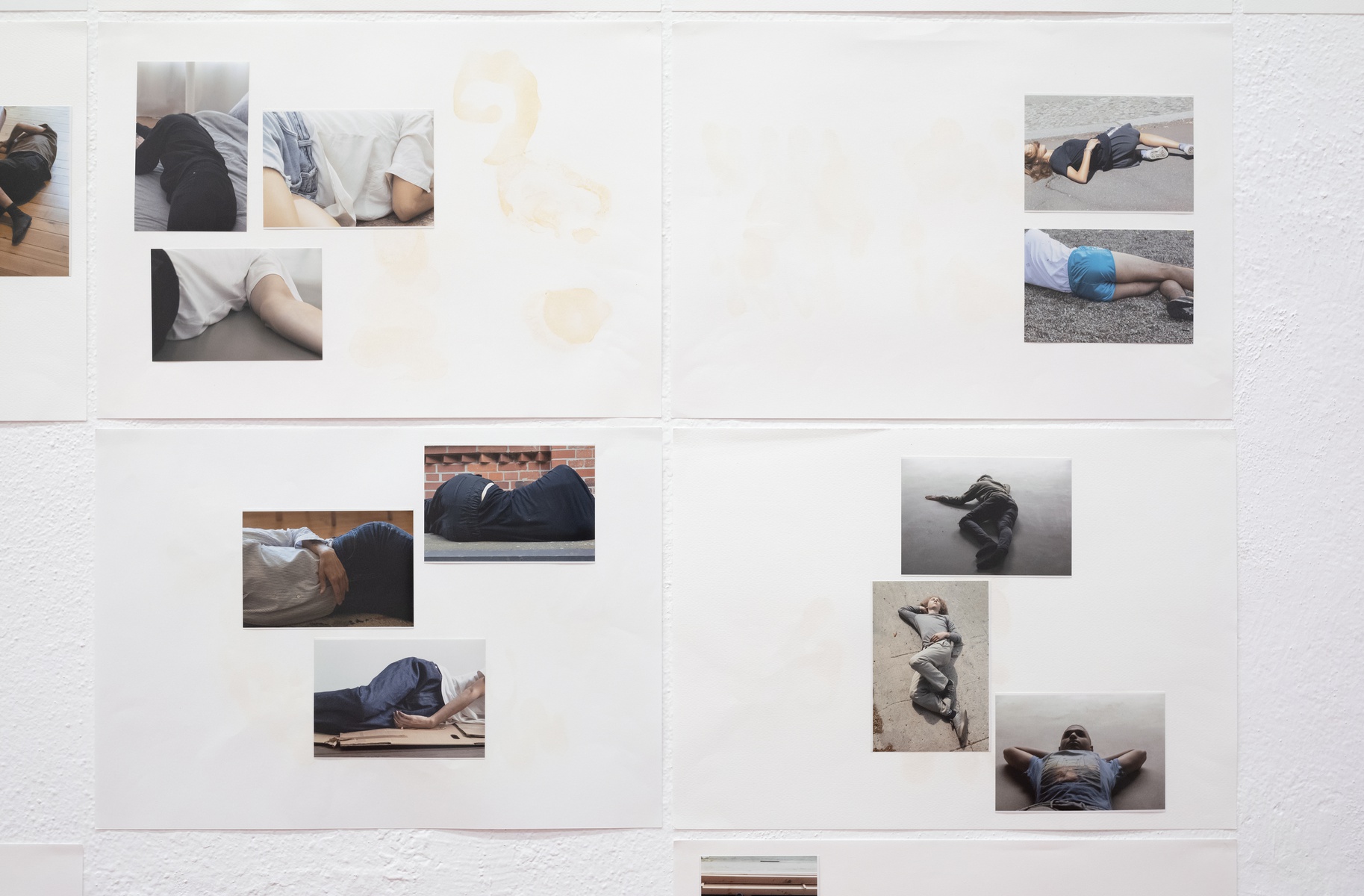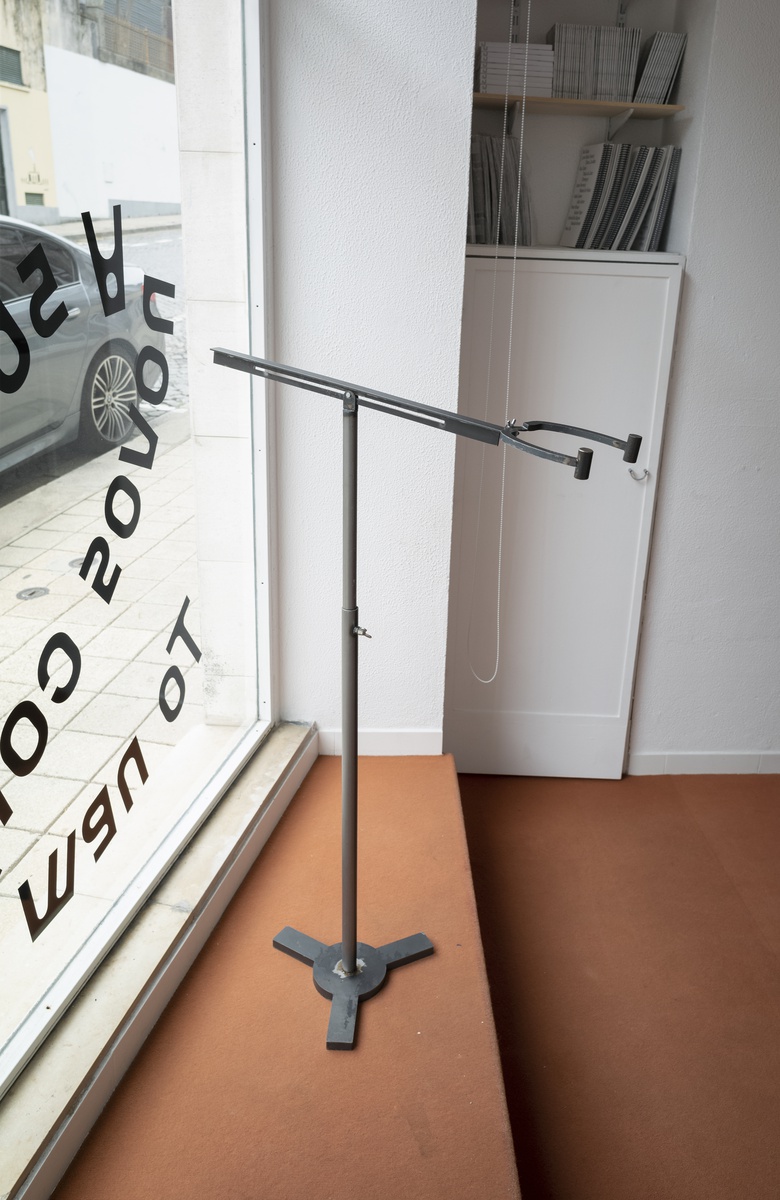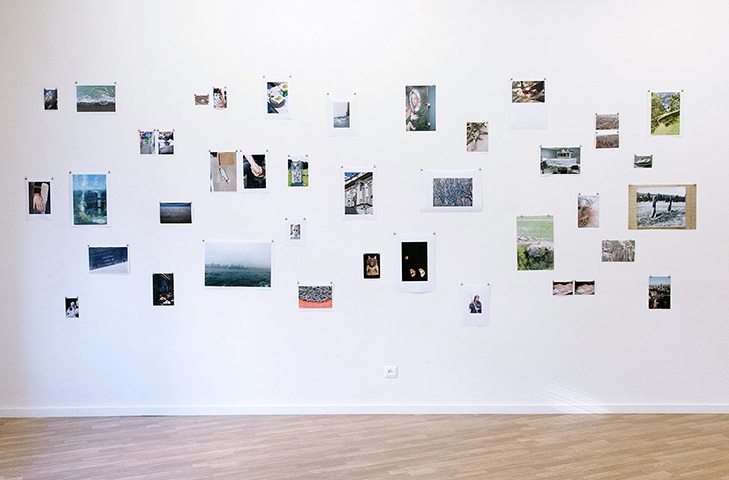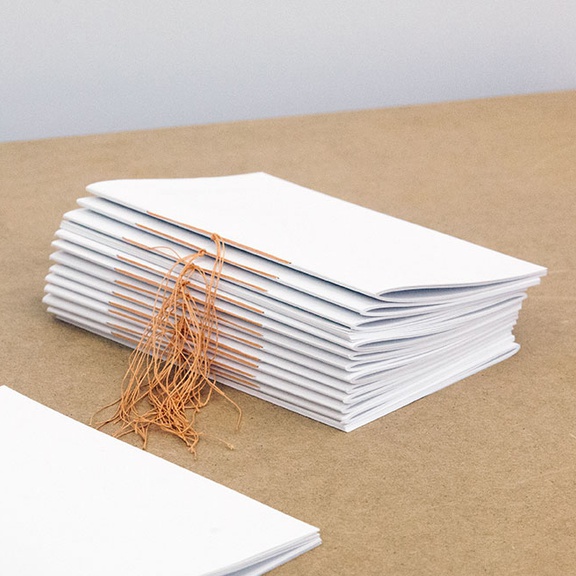Gesture Studies
Exhibition
4 Sep – 2 Oct 2021
In this exhibition, Heinz Peter Knes lays out a set of gestures, postures, and natural movements. The wall installation consists of about 150 montage sheets, each focusing a particular body part and its movement, collecting and connecting different gestures. Single protagonists and their individual traits make way for a universal vocabulary of stylized embodiment. In contrast to the format of portraiture, which aims to capture a person(ality), here the anonymous encounters set its sight on the photographic process. As the focus moves towards the fragmentary, the one-to-one situation between the photographer and the subject becomes less intimate. The grid-like structure on the wall is partitioned in components that fixate the attention to one physical expression each: bowing back, walking, the knee, expression of hands, resting head… The photographs show gestures that are familiar to both the viewer and the photographed subject, while the focus on the fragment and its repetition allows the viewer to compare them with their own habitualised appearance. As with attitudes and modes of behavior or bodily rhetoric in general, specific postures introduce social and cultural codes involving the body and its textures. In the exhibition Gesture Studies, the set of gestures embodies material, which remains latent and breaks out from that living reality, that eliminate codes and style, and thus go beyond representation and the symbolical, while gestural codes are deprived of a shared system of reference.
In the first decades of the medium, until the 1860s, it was common to control the body during photographic processes. In order to have a person’s face appear in focus, for example, a so-called head brace was used—a device to hold heads still in position during long exposure time required at that time to make a portrait: The rules of body pose as a force of human behavior through technology. The way people move or use their body depends radically on how a certain culture passes on these skills, as every culture teaches “techniques of the body”.1 The use of our body, and thus our body itself, is influenced, formed, and produced in a culturally specific way. Bodies are made by techniques, which form them through a network of rules, regiment, and control physical behavior—the “disciplined body”2 as a product of a certain kind of power which produces a body useful to itself and its economic practice.
The process of selection that happened in Knes’ studio is reflected in the serial variety shown in the exhibition. His study of gestures exposes the potentiality of their variations, as well as the continuous and incessant process that is immanent in his photographic work. Knes conceived a formula for encountering the similarity relation by placing the photographs in the vicinity of other resembling images. This procedure reveals a richness of nuances that exists in the arrangement, a diversity that is generated through that comparative mode, and its manifoldness. Instead of highlighting individual motifs, Knes looks at the overall ensemble, a rich repertoire about the ambiguity of the body and the world. The burden of photography, or rather the hopes, which were or still are being misleadingly claimed in terms of its representation of reality, are hard to get rid of. Because of its mimetic character, it’s too easy to project attributions of similarity or some kind of identity onto it. Let us turn away from the deception and devote ourselves to the differences this study has to offer.
Melissa Canbaz
1. The sociologist and ethnologist Marcel Mauss recognizes the significance of these “techniques” as an index of cultural variation. In his essay Techniques of the Body, published in 1934, Mauss sketches a classification of various postures and gestures adopted by different cultures.
2. In Discipline and Punish: The Birth of prison (1975), Foucault theorizes the “disciplined” or “docile body” as a malleable object on which disciplinary force is acted. Here, the body is an object that we can read in order to determine how fields of power are organised during moments in history, through its movements, its postures, its positionality. For Foucault these reveal the discursive forces that have shaped it.
Heinz Peter Knes, born 1969, studied photography at University of Applied Sciences Dortmund. His work as an artist is located around documentation and photography. He recently exhibited at Künstlerhaus Bremen (2020), Casa Barragán Mexico City (2019), Thomas Erben Gallery New York (2017). Amongst his latest activities is also a publication on the Marx-Engels-monument in Berlin (2018) and a documentation on the workshops of Paris Opera (2019).
Melissa Canbaz is a writer and curator based in Berlin. Previously she has worked for Kuenstlerhaus Bremen, and for Haus der Kulturen der Welt. She has initiated exhibitions in Glasgow, Buenos Aires, Bremen and Berlin, among others. She is the co-founder of the project space STATIONS in Berlin-Kreuzberg.
Support
Exhibition
4 Sep – 2 Oct 2021

